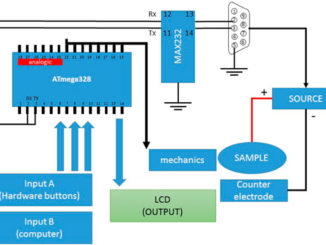
Writers: S. Thirumalairajan, K. Girija, Valmor R. Mastelaro, and N. Ponpandian
Keywords: LaFeO3, nanocubes, network, NO2 gas, radio frequency sputtering, thin films
Abstract: In the present work, perovskite LaFeO3 thin films with unique morphology were obtained on silicon substrate using radio frequency magnetron sputtering technique. The effect of thickness and temperature on the morphological and structural properties of LaFeO3 films was systematically studied. The X-ray diffraction pattern explored the highly oriented orthorhombic perovskite phase of the prepared thin films along [121]. Electron micrograph images exposed the network and nanocube surface morphology of LaFeO3 thin films with average sizes of ∼90 and 70 nm, respectively. The developed LaFeO3 thin films not only possess unique morphology, but also influence the gas-sensing performance toward NO2. Among the two morphologies, nanocubes exhibited high sensitivity, good selectivity, fast response–recovery time, and excellent repeatability for 1 ppm level of NO2 gas at room temperature. The response time for nanocubes was 24–11 s with a recovery duration of 35–15 s less than the network structure. The sensitivity toward NO2 detection was found to be in the range 29.60–157.89. The enhancement in gas-sensing properties is attributed to their porous structure, surface morphology, numerous surface active sites, and the oxygen vacancies. The gas-sensing measurements demonstrate that the LaFeO3 sensing material is an outstanding candidate for NO2 detection.




